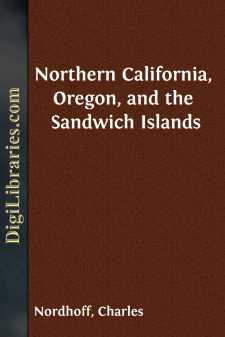Categories
- Antiques & Collectibles 13
- Architecture 36
- Art 48
- Bibles 22
- Biography & Autobiography 813
- Body, Mind & Spirit 142
- Business & Economics 28
- Children's Books 16
- Children's Fiction 13
- Computers 4
- Cooking 94
- Crafts & Hobbies 4
- Drama 346
- Education 46
- Family & Relationships 57
- Fiction 11829
- Games 19
- Gardening 17
- Health & Fitness 34
- History 1377
- House & Home 1
- Humor 147
- Juvenile Fiction 1873
- Juvenile Nonfiction 202
- Language Arts & Disciplines 88
- Law 16
- Literary Collections 686
- Literary Criticism 179
- Mathematics 13
- Medical 41
- Music 40
- Nature 179
- Non-Classifiable 1768
- Performing Arts 7
- Periodicals 1453
- Philosophy 64
- Photography 2
- Poetry 896
- Political Science 203
- Psychology 42
- Reference 154
- Religion 513
- Science 126
- Self-Help 84
- Social Science 81
- Sports & Recreation 34
- Study Aids 3
- Technology & Engineering 59
- Transportation 23
- Travel 463
- True Crime 29
Northern California, Oregon, and the Sandwich Islands
by: Charles Nordhoff
Categories:
Description:
Excerpt
CHAPTER I.
HONOLULU AND THE ISLAND OF OAHU.
The Hawaiian group consists, as you will see on the map, of eleven islands, of which Hawaii is the largest and Molokini the smallest. The islands together contain about 6000 square miles; and Hawaii alone has an area of nearly 4000 square miles, Maui 620, Oahu (which contains Honolulu, the capital) 530, and Kauai 500. Lanai, Kahoolawe, Molokai, Niihau, Kaula, Lehua, and Molokini are small islands. All are of volcanic origin, mountainous, and Hawaii contains the largest active crater in the world—Kilauea—one of the craters of Mauna Loa; while Maui contains the largest known extinct crater, Haleakala, the House of the Sun—a pit thirty miles in circumference and two thousand feet deep. Mauna Loa and Mauna Kea are nearly 14,000 feet high, as high as Mount Grey in Colorado; and you can not ride anywhere in the islands without seeing extinct craters, of which the hill called Diamond Head, near Honolulu, is an example.
Honolulu—General View
Click Thumbnail for full-size Illustration
The voyage from San Francisco to Honolulu is now very comfortably made in one of the Pacific Mail Company's steamers, which plies regularly between the two ports, and makes a round trip once in every month. The voyage down to the Islands lasts from eight to nine days, and even to persons subject to sea-sickness is likely to be an enjoyable sea-journey, because after the second day the weather is charmingly warm, the breezes usually mild, and the skies sunny and clear. In forty-eight hours after you leave the Golden Gate, shawls, overcoats, and wraps are discarded. You put on thinner clothing. After breakfast you will like to spread rugs on deck and lie in the sun, fanned by deliciously soft winds; and before you see Honolulu you will, even in winter, like to have an awning spread over you to keep off the sun. When they seek a tropical climate, our brethren on the Pacific coast have to endure no such rough voyage as that across the Atlantic. On the way you see flying-fish, and if you are lucky an occasional whale or a school of porpoises, but no ships. It is one of the loneliest of ocean tracks, for sailing-vessels usually steer farther north to catch stronger gales. But you sail over the lovely blue of the Pacific Ocean, which has not only softer gales but even a different shade of color than the fierce Atlantic.
We made the land at daylight on the tenth day of the voyage, and by breakfast-time were steaming through the Molokai Channel, with the high, rugged, and bare volcanic cliffs of Oahu close aboard, the surf beating vehemently against the shore. An hour later we rounded Diamond Head, and sailing past Waikiki, which is the Long Branch of Honolulu charmingly placed amidst groves of cocoa-nut-trees, turned sharp about, and steamed through a narrow channel into the landlocked little harbor of Honolulu, smooth as a mill-pond.
It is not until you are almost within the harbor that you get a fair view of the city, which lies embowered in palms and fine tamarind-trees, with the tall fronds of the banana peering above the low-roofed houses; and thus the tropics come after all somewhat suddenly upon you; for the land which you have skirted all the morning is by no means tropical in appearance, and the cocoa-nut groves of Waikiki will disappoint you on their first and too distant view, which gives them the insignificant appearance of tall reeds....



